Where are all the ladybirds?
Weatherwise, 2023 has been a weird year. Over winter we had mild, wet spells and then extreme cold, a wet March and April and then the weather flipped to hot and dry. No wonder people are concerned about insect numbers, especially ladybirds.
Like many gardeners, I’ve had more aphids and whitefly than usual in May and early June. Many of my fruit trees, limes and hornbeam were glistening from honeydew that had not been washed off by rain. Blackfly appeared on my broad beans and whiteflies on my brassicas. I waited patiently through May, looking out for ladybirds, but no sign. I was not alone, there were numerous comments on social media about the lack of insects, natural predators in particular. Charles Dowding commented in his newsletter that he felt there were significantly fewer predators, such as ladybird larvae, and he was worried. He also commented that he had grey aphids on his calabrese – a first for him.
There is always a lag between the pest arriving and the predator appearing, because the predator needs food. But this year, I feel that the pests have had the upperhand and that the weather back in April and May favoured them. But things are improving. I have seen ladybird and hoverfly larvae now in the third week in June so hopefully things will get back into balance.
So what’s happening? I don’t have the answers! Looking back, 2021 had the coldest spring for 400 years, and ladybird numbers were down by as much as 60% in some places according to Ben Keywood, entomologist at Sheffield Wildlife Trust. He felt that the downpours of rain washed out early aphids so the ladybirds had no food. That doesn’t seem to be the case this year, but the timing of rains can be critical. A week or two either way, could mean either the pest or or the predator is affected more severely.
So what can we do?
I think biodiversity in the garden is key. I am often asked what I mean by a biodiverse garden and for me, its one that has lots of different types of plants – annuals, perennials, trees and shrubs. There is diversity too within the vegetable plot with no large expanses of one type of vegetable, but more intercropping and also, crops at different stages of their life cycles. So have a look around your growing space. How many different types of plants can you see? Also, I like to see different mini-habitats – herbaceous beds, shrubs, orchard, pond, scrubby areas, walls and fences etc. Ideally, you are aiming to create a patchwork or mosaic of habitats in your garden that support a diverse array of bacteria and fungi and animals from earthworms to birds and mammals.
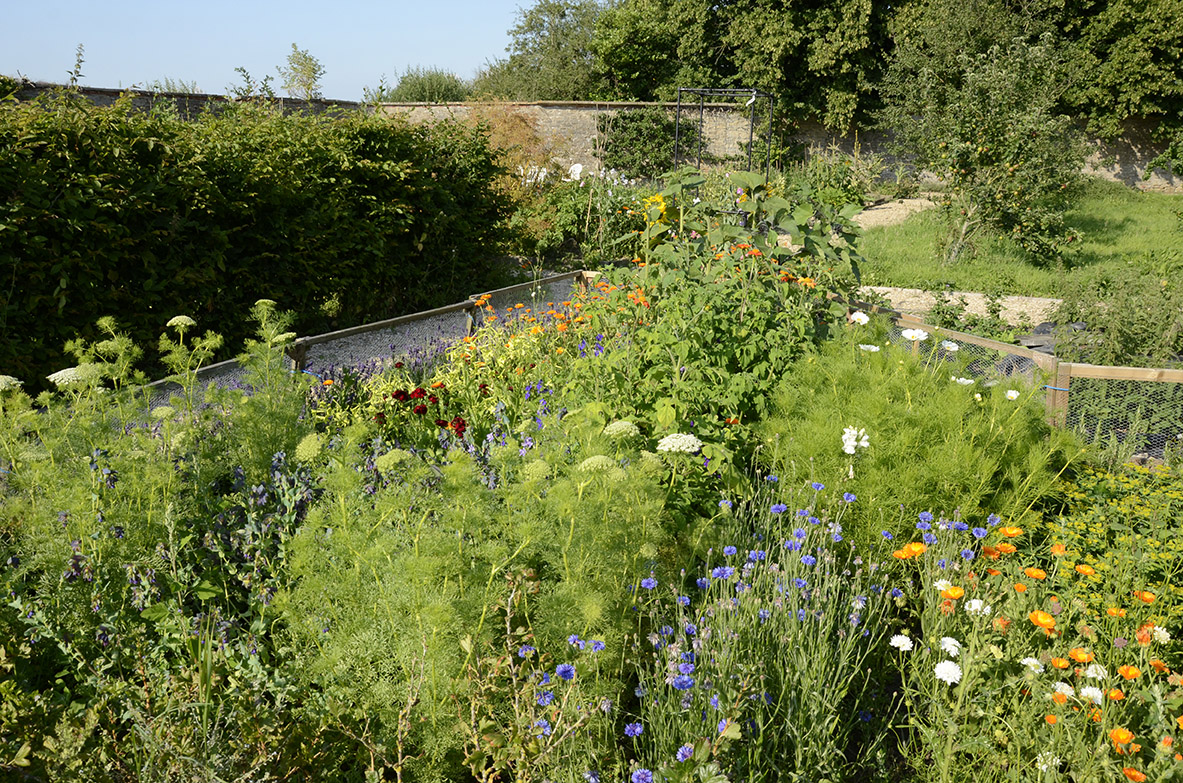
I get worried when I hear gardeners say they don’t have any pests. You need some pests as food for your predators and you can’t have one without the other. What you are working towards is a healthy ecosystem that can cope with a few pests which are kept in check by many different predators. You can’t afford to let the pests get ahead though, so you want to bring the beneficial predators into your garden and keep them there. A small nettle patch, for example, will support aphids early in the year, which in turn, will give ladybirds something to feed on.
Blackfly
I am sure we all get blackfly on our beans, but did you know that the blackfly has a special relationship with black ants? The ants tend these sap-sucking insects, protecting them from predators while they feed on the honeydew produced by the blackfly. So, watch out for ants – if you see them running up and down a stem of a plant its a sign that there may be blackfly. Remove the ants so that the blackfly is no longer protected and predators can feed on them. This can be achieved simply by putting some sticky tape or vaseline around the bottom of the plant to stop the ants passing.
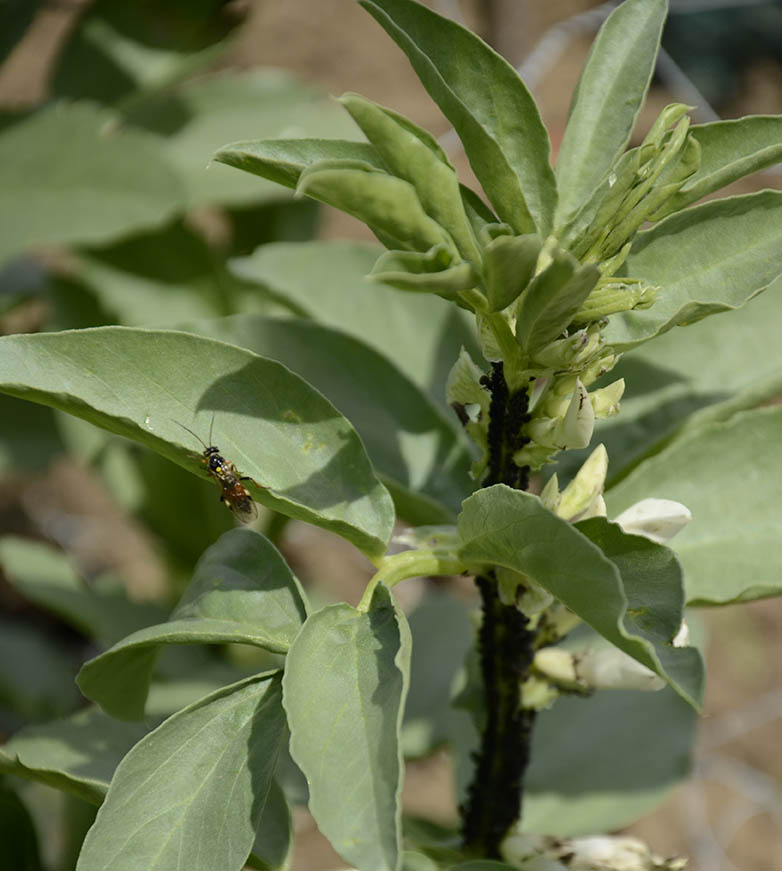
White butterflies
One insect that seems to be far fewer in number this year is the small white butterfly. At the moment my garden is full of butterflies – meadow browns, tortoiseshells, red admirals, blues, skippers, the odd marbled white, gatekeeper and more but no whites this year – so far. I’m not complaining and my defences are already in place. The cabbage white and small white butterflies lay their eggs on brassicas, so my butterfly netting is at the ready. I plant a lot of nasturtiums to draw the butterflies away from the brassicas, as a trap crop, and they will be sacrificed if they get covered in caterpillars. I am still sowing nasturtium seed so I have more in pots to plant out as the season progresses.
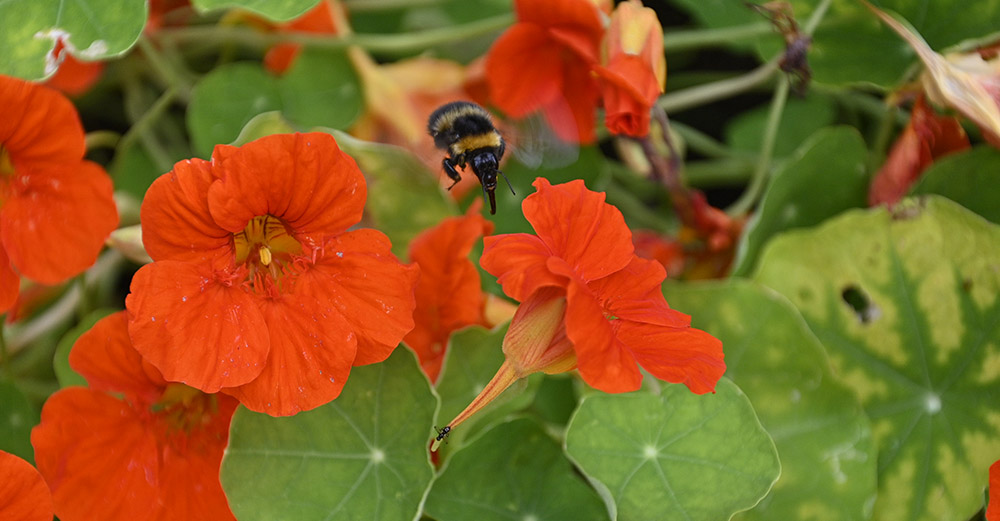
Attract the predators
Back in April, I let my overwintered brassicas flower as their flowers are loved by parasitic wasps. This brings them into the garden early in the year. And then I need to keep them in the garden by a steady supply of their favourite flowers and that includes phacelia and overwintered parsnips which come into flower in June. Parasitic wasps are very welcome as they lay their eggs in caterpillars, including those of the cabbage white ones and eat them alive. There are more than 6000 species of parasitic wasps in the UK alone, ranging in size from tiny to several centimetres long. Have a read of this great article: The body snatchers – eaten alive. https://www.nhm.ac.uk/discover/body-snatchers-eaten-alive.html
Hoverflies are important too, and again through careful choice of flower, you can have them all summer. About half of the hoverflies in the UK have larvae that eat small sap-sucking insects. But becareful, the hoverfly larva looks a bit like a tiny slug. and so many gardeners have told me that they squish them! So know your larvae!
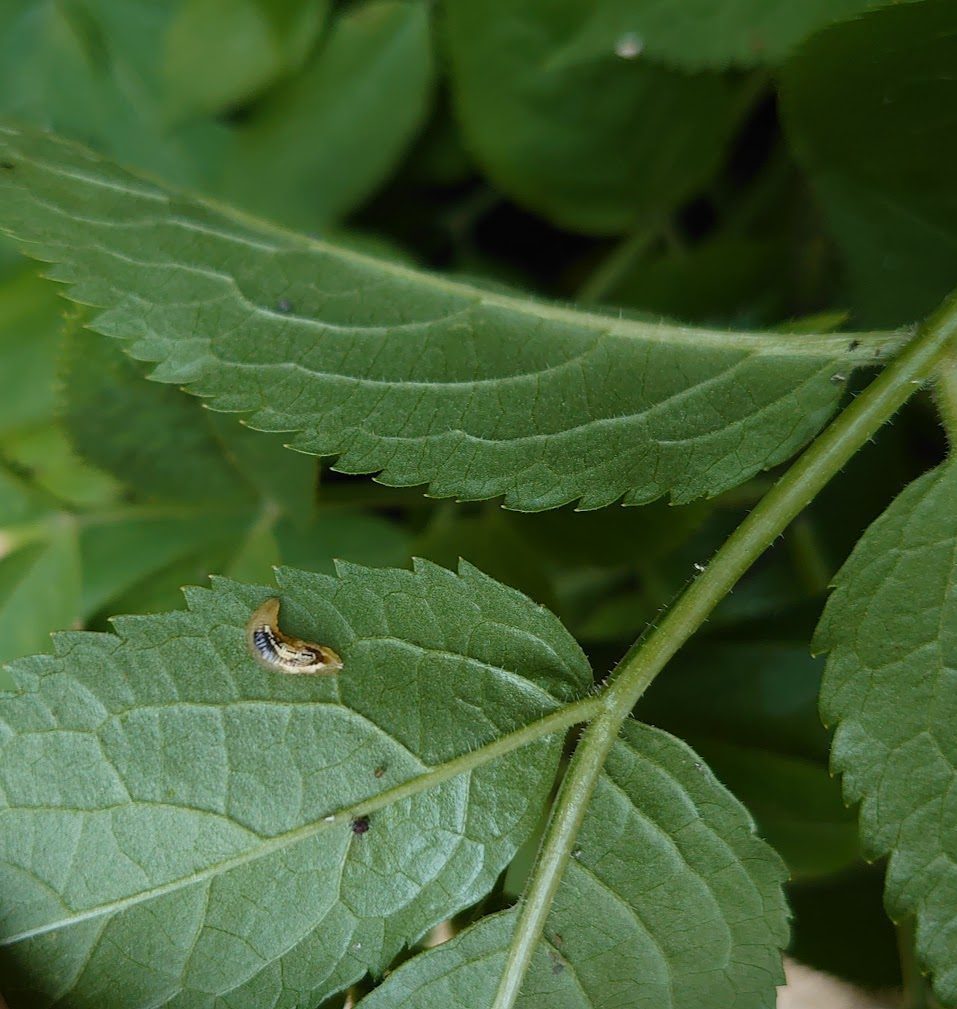
By choosing wisely you can attract a lot of predators into the garden. My top plants are:
Phacelia – for predatory hoverflies and parasitic wasps as well as pollinators.
Angelica – predatory hoverflies, lacewings, ladybirds
Dill and fennel – predatory hoverflies, lacewings, tachinid flies, parasitic wasps
French marigolds – predatory hoverflies, ladybirds, parasitic wasps
And don’t forget ground beetles. One of my favourite predators is the fast moving ground beetle that has a voracious appetite for slugs, larvae and more. They love to overwinter in a thick layer of leaf litter, in a wood pile or under stones so make sure to include these in your garden.
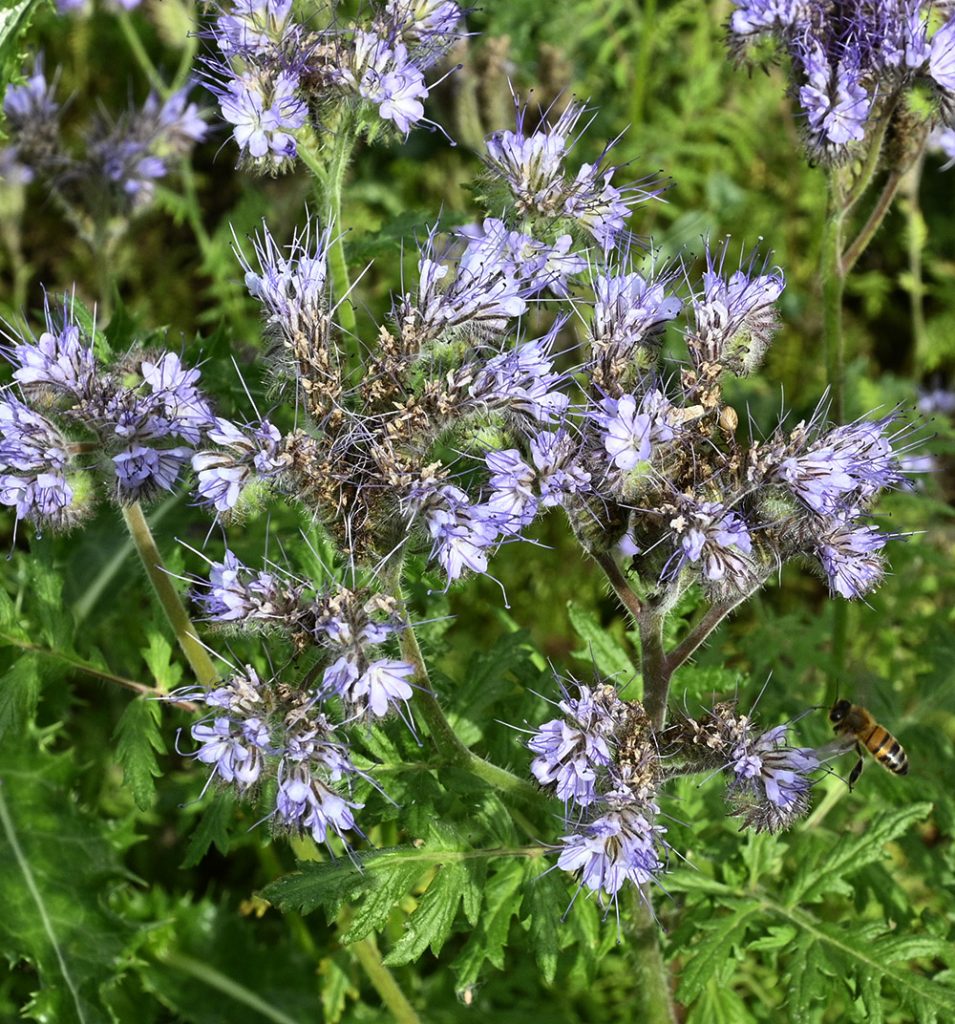

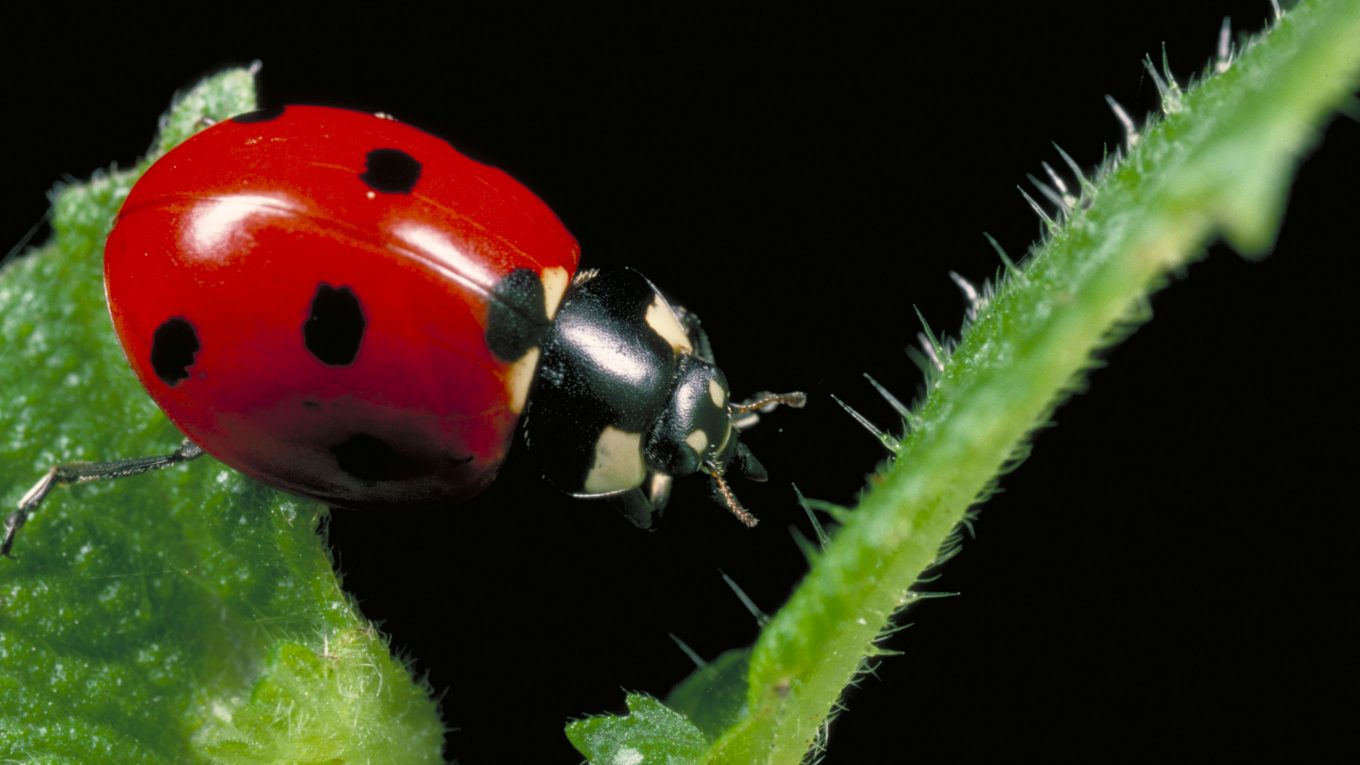



I have loads of ladybirds and larvae on both my allotment and in my garden. I think more this year than normal. I do feel bees and butterflies have suffered with the very wet conditions